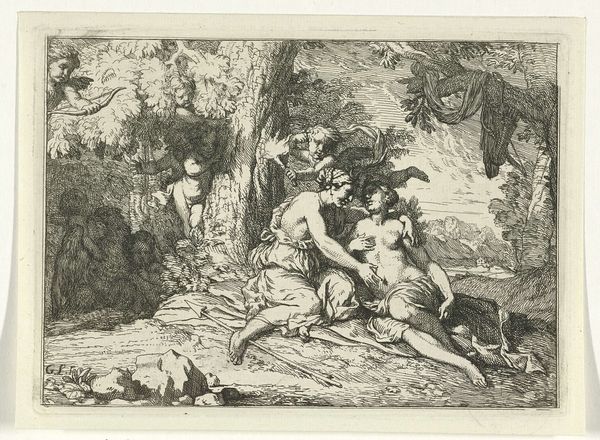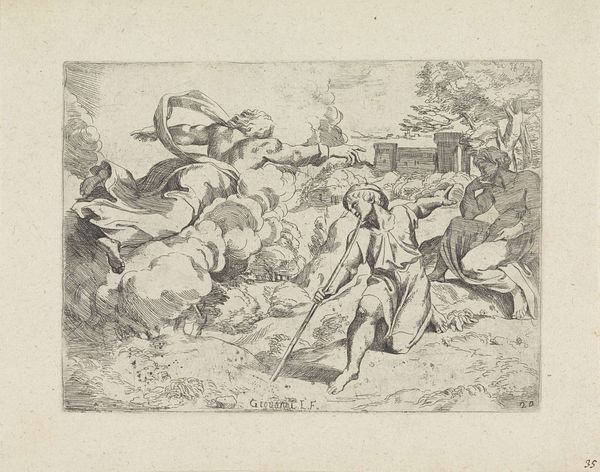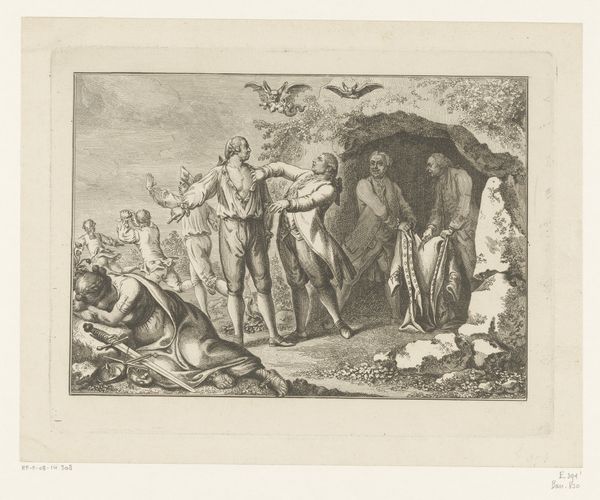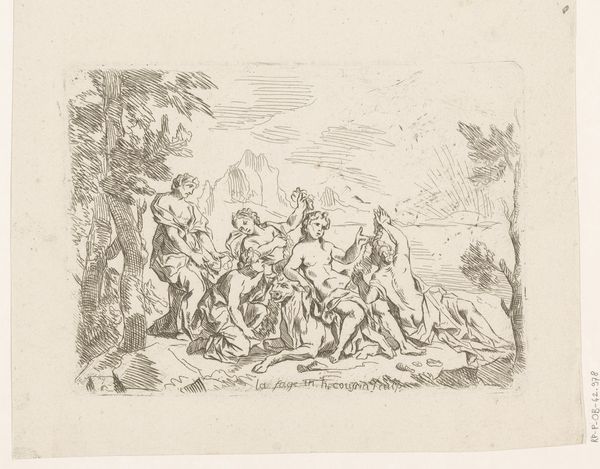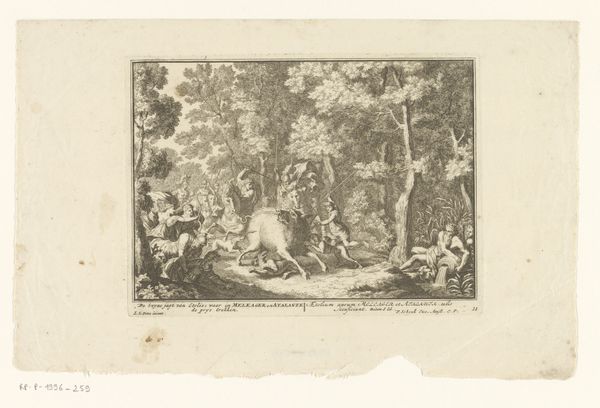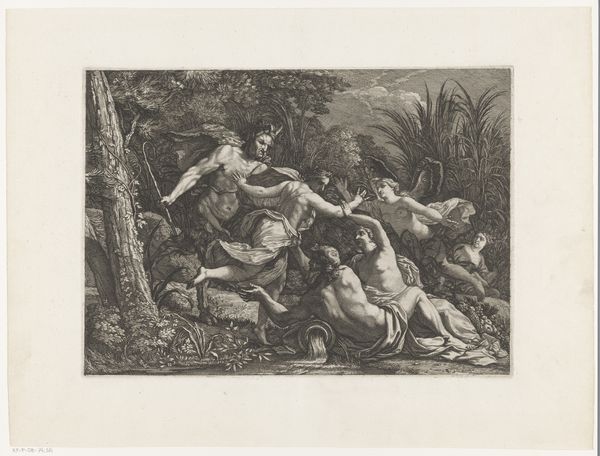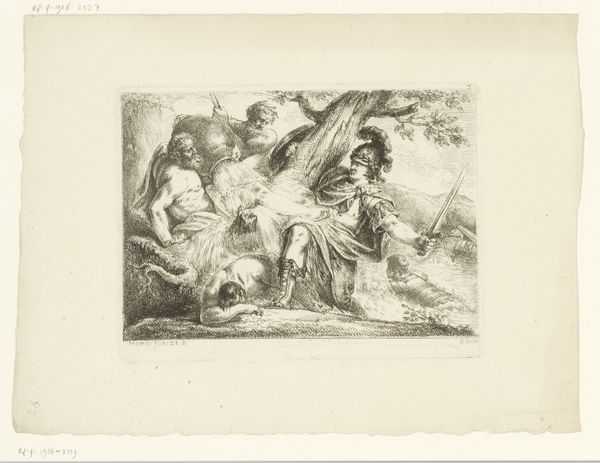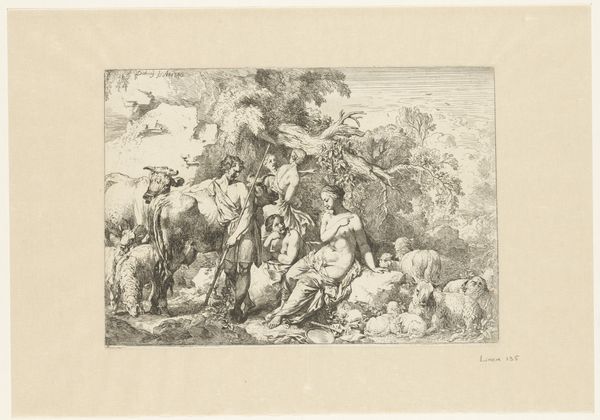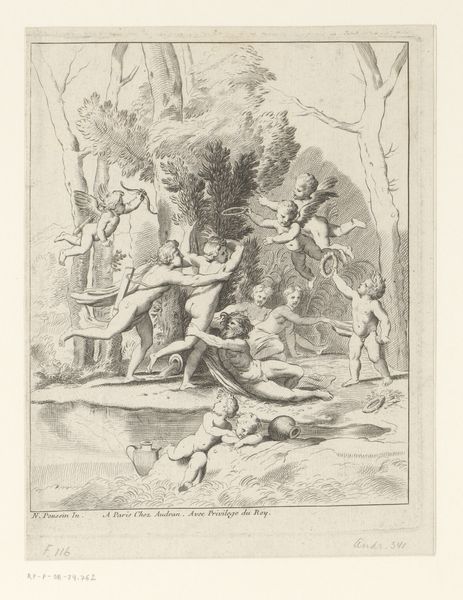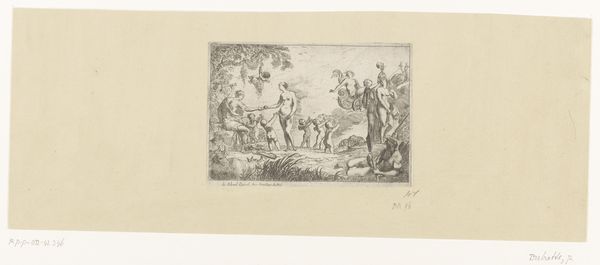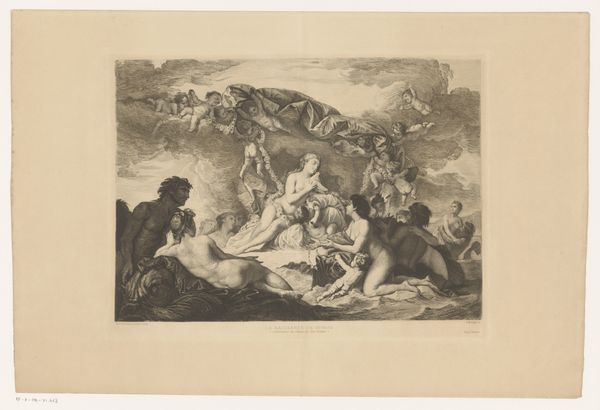
etching, engraving
#
baroque
#
etching
#
landscape
#
figuration
#
history-painting
#
engraving
Dimensions: height 199 mm, width 240 mm
Copyright: Rijks Museum: Open Domain
Curator: This compelling etching, "Begraven van de doden," or "Burial of the Dead," by Michel François Dandré-Bardon, dating from somewhere between 1710 and 1783, plunges us into a scene of somber desperation. Editor: It certainly does. The chaotic composition immediately grabs your attention—figures scrambling in a seemingly random fashion under a rather bleak, gray sky. The mood is unsettling. Curator: Unsettling is accurate, given the broader history surrounding these kinds of scenes depicting human suffering and resilience. Etchings like this offered a mode of commentary on the power structures of the time. Who had access to dignified burial, who didn’t, and the very human labor involved… it speaks to the social inequalities present even in death. Editor: Notice the recurring imagery of drapery and veils. Whether shrouding the dead or clutched in grief, these coverings almost become characters themselves. They create an interplay of concealment and revelation that invites the viewer to consider mortality and mourning. Curator: Indeed, and placing it within the context of 18th-century France is vital, because this work directly acknowledges class and its influence. Even the presence of that classical statue in the background seems to mock the reality in the foreground. The social contract feels undeniably broken in such imagery. Editor: I'm particularly drawn to the symbolic role of the lantern held by the figure on the left. In the literal sense, it cuts through the darkness. But on another level, doesn’t it also represent the feeble light of reason or humanity struggling against despair and societal breakdown? It seems a subtle, yet critical, emblem here. Curator: The distribution of labor depicted also reinforces broader arguments around power at the time. We might interpret their tasks as a metaphor for how those in the lower societal strata carried the literal weight, burden and costs, of the actions of the ruling class. Editor: Dandré-Bardon presents to us a harsh meditation on human frailty but also on persistence through these scenes that are repeated through humanity. What do you take away from having observed it through that lens? Curator: I think it reaffirms art’s capacity to dissect historical power dynamics in subtle yet visceral ways, highlighting whose stories are often erased.
Comments
No comments
Be the first to comment and join the conversation on the ultimate creative platform.

